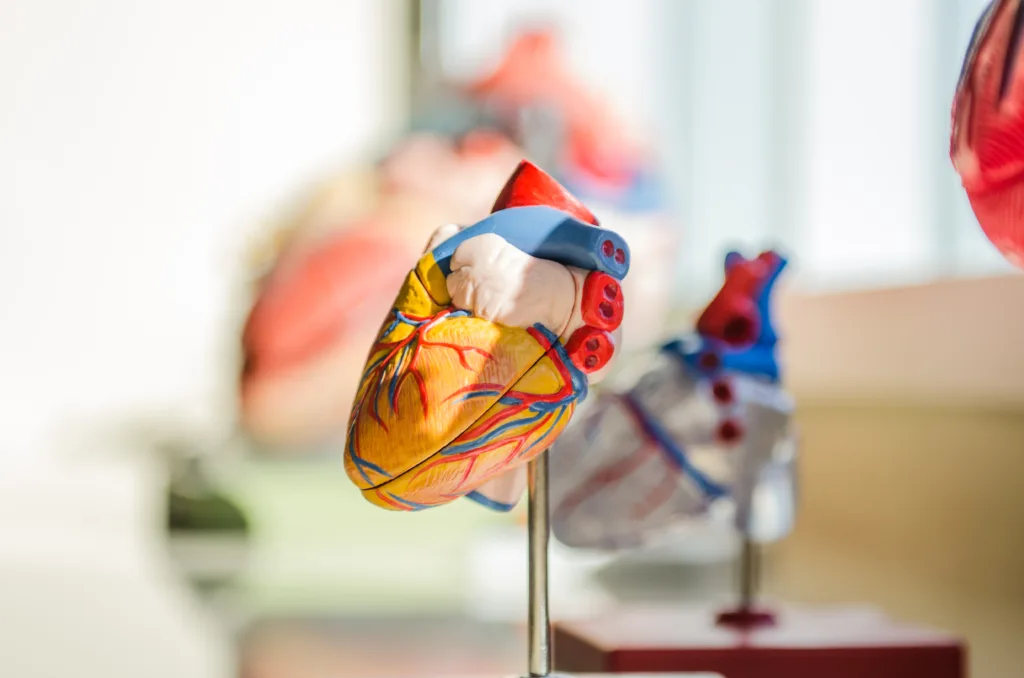The heart is a vital organ in the human body that pumps blood to different parts of the body. It has four chambers, two atria, and two ventricles. The left ventricle and the right ventricle are the two lower chambers of the heart. The left ventricle is one of the most important chambers of the heart as it is responsible for pumping oxygenated blood to the rest of the body.
The left ventricle is thicker than the right ventricle. This is because the left ventricle has to pump blood to the rest of the body, while the right ventricle only has to pump blood to the lungs. The walls of the left ventricle are thre times thicker than those of the right ventricle. The wall of the left ventricle is between 8-12 mm thick, while the right ventricle’s wall is only 2-3 mm thick.
The thicker walls of the left ventricle enable it to pump blood to the rest of the body more efficiently. The left ventricle has to generate more pressure than the right ventricle to pump blood to the rest of the body effectively. The left ventricle’s thicker walls allow it to generate higher pressure, which is necessary for pumping blood to the rest of the body.
The left ventricle’s wall is longer and narrower than the right ventricle, extending from its base in the plane of the atrioventricular groove to the cardiac apex. The left ventricle’s shape is essential for its function as it allows it to generate higher pressure, which is necessary for pumping blood to the rest of the body.
Left ventricular hypertrophy is a thickening of the wall of the heart’s main pumping chamber. This thickening may result in an elevation of pressure within the heart and sometimes poor pumping action. The most common cause of left ventricular hypertrophy is high blood pressure. Other causes include heart valve disease, congenital heart defects, and cardiomyopathy.
The left ventricle is thicker than the right ventricle. The left ventricle’s thicker walls enable it to pump blood to the rest of the body more efficiently. The left ventricle’s shape is also essential for its function as it allows it to generate higher pressure, which is necessary for pumping blood to the rest of the body. Left ventricular hypertrophy is a condition that requires medical attention and treatment to prevent complications.
Why Is The Right Ventricle Thinner Than The Left?
The right ventricle is thinner than the left ventricle because it only needs to pump blood to the lungs, whereas the left ventricle is responsible for pumping blood to the entire body. As a result, the left ventricle has a thicker wall to generate more force to pump blood through the entire circulatory system.
Additionally, the blood in the arteries is uner higher pressure than blood in the veins, which requires the left ventricle to generate more force to pump blood through the arterial system. Thus, the left ventricle must have a thicker wall than the right ventricle to withstand the pressure generated during the contraction of the heart.
The differences in the thickness of the ventricular walls are due to the different functions they perform and the pressure demands of the circulatory system.

Is Left Or Right Ventricular Wall Thicker?
The wall of the left ventricle is thicker than the right ventricle. Specifically, the left ventricular wall is three times thicker than the right ventricular wall. The thickness of the left ventricular wall ranges from 8-12 mm, while the thickness of the right ventricular wall is comparatively thinner. It’s essential to note that the left ventricle is longer and narrower than the right ventricle, and it extends from its base in the plane of the atrioventricular groove to the cardiac apex.
Why Are Left Ventricle Walls Thicker Than Right Ventricle?
The left ventricle of the heart is responsible for pumping oxygenated blood to the body, whie the right ventricle pumps deoxygenated blood to the lungs. Due to the higher pressure required to pump blood to the body, the walls of the left ventricle are thicker and more muscular than those of the right ventricle. The left ventricle must pump blood through the systemic circulation, which involves a longer and more complex pathway than the pulmonary circulation. Therefore, the increased muscle mass in the left ventricle allows it to generate greater force and maintain a higher pressure to efficiently pump blood throughout the body. the left ventricle walls are thicker than the right ventricle walls to accommodate the greater pressure required to pump blood to the body.
Why The Left Ventricle Is Thicker And Larger?
The left ventricle is thicker and larger due to a process called left ventricular hypertrophy. This condition is characterized by the thickening of the wall of the heart’s main pumping chamber, which may result in an elevation of pressure within the heart and sometimes poor pumping action. The most common case of left ventricular hypertrophy is high blood pressure, which forces the heart to work harder to pump blood throughout the body. Other factors that may contribute to left ventricular hypertrophy include obesity, smoking, and certain medical conditions such as aortic stenosis or hypertrophic cardiomyopathy. As a result, the left ventricle becomes larger and thicker in order to compensate for the increased workload, which can ultimately lead to heart failure if left untreated.

Conclusion
The left ventricle is an essential part of the heart responsible for pumping oxygenated blood to the rest of the body. It has a thicker wall compared to the rght ventricle as it needs to work harder to supply blood to all organs and tissues. The left ventricle’s proper functioning is crucial for maintaining a healthy cardiovascular system. Any abnormalities in its structure or function, such as left ventricular hypertrophy, can lead to serious health problems. Therefore, it is crucial to maintain a healthy lifestyle and seek medical attention if any symptoms related to the heart’s left ventricle are observed.
